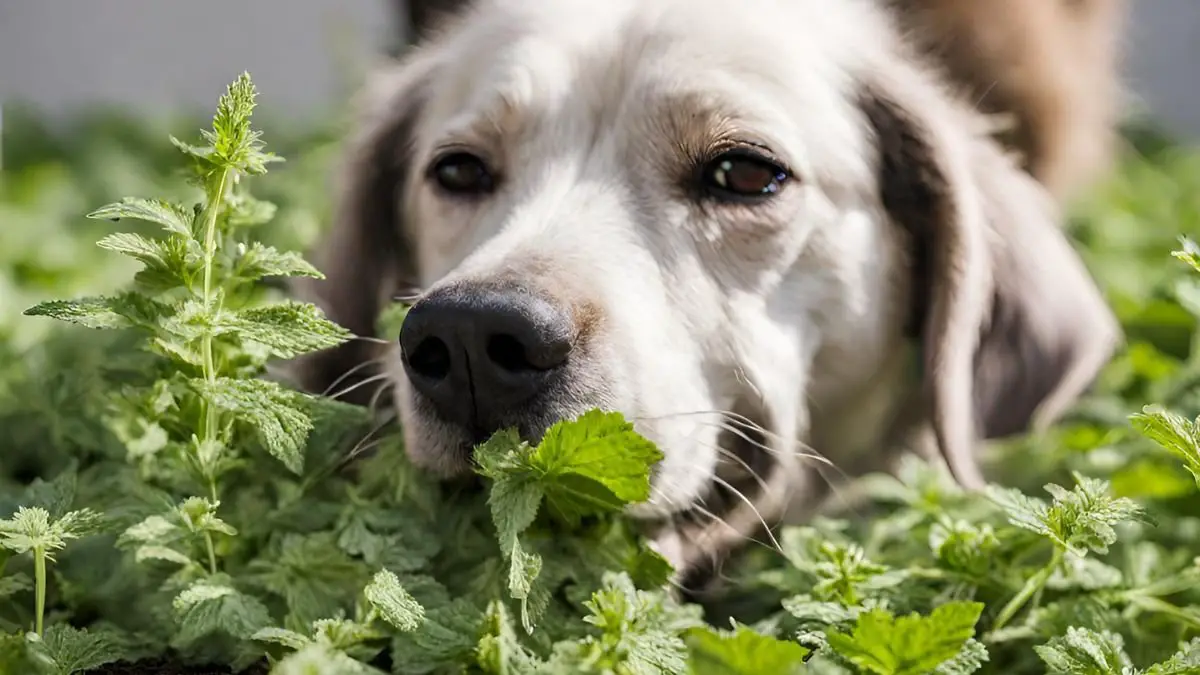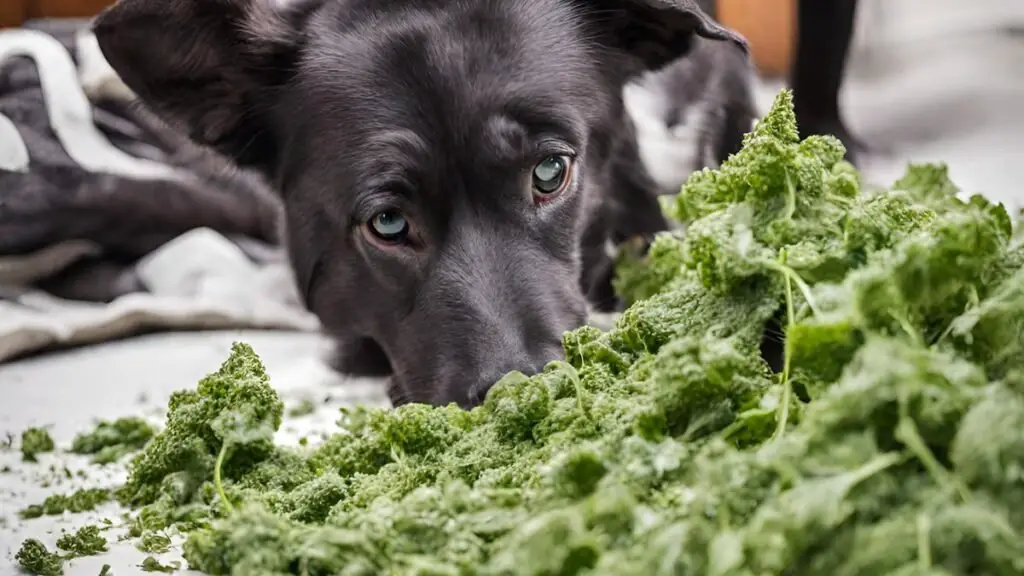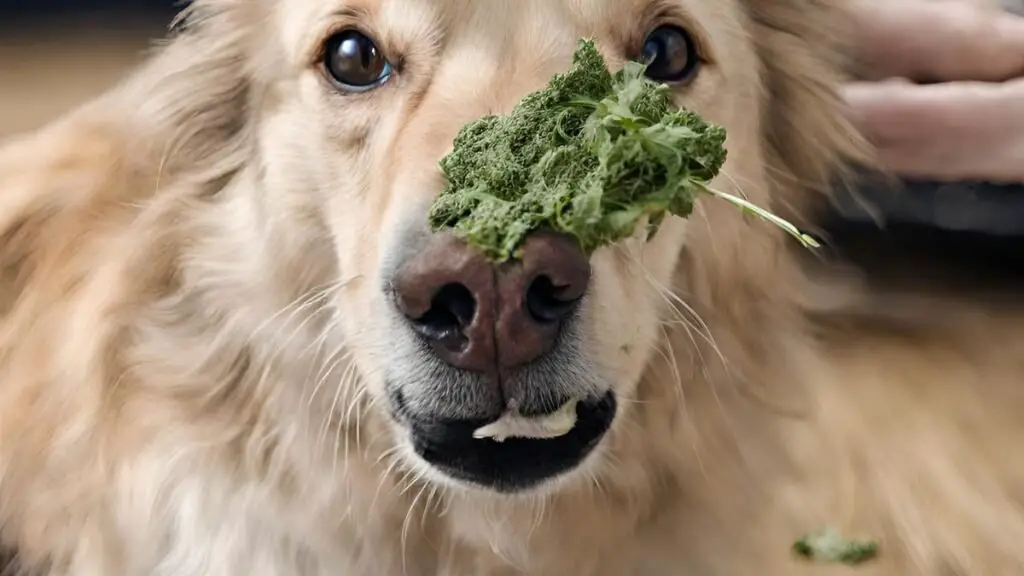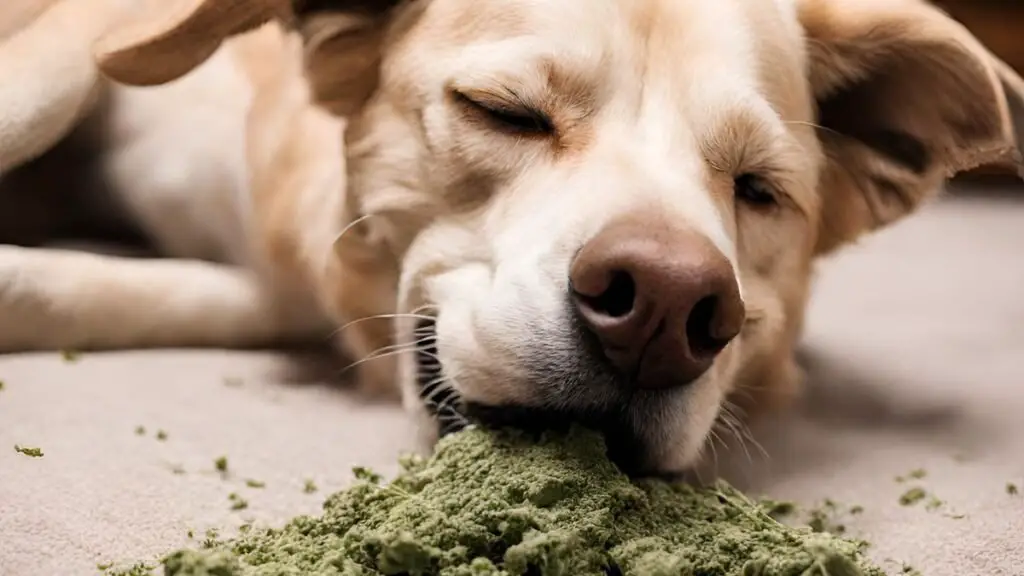
If you're worried because your dog eats catnip, don't panic. I can guide you through understanding this behavior and its potential consequences. Understanding why dogs are attracted to catnip and how it affects them is crucial for responsible pet ownership.
Catnip, scientifically known as Nepeta cataria, contains a compound called nepetalactone that triggers a euphoric response in cats. While cats are the primary responders to catnip, some dogs may also show interest. However, unlike cats, dogs typically don't experience the same euphoria. Instead, consuming catnip might cause mild gastrointestinal upset, such as vomiting or diarrhea, in dogs. If your dog ingests catnip, monitor their behavior and contact your veterinarian if you notice any concerning symptoms.
As complex creatures, dogs exhibit various behaviors that can sometimes be puzzling. If you're curious about other curious habits or concerns regarding your furry friend's health and well-being, there's plenty more information and advice to explore. Feel free to delve deeper into the world of canine behavior and pet care to ensure your dog leads a happy and healthy life.
Key Takeaways
- Understand Catnip: Catnip is a herb that affects cats due to a compound called nepetalactone.
- Avoid Feeding Dogs Catnip: While catnip is safe for cats, it is not recommended for dogs due to potential adverse effects.
- Risks of Catnip for Dogs: Ingesting catnip can lead to digestive issues, lethargy, or agitation in dogs.
- Explore Safe Alternatives: Consider other natural remedies like chamomile or valerian root for calming effects on dogs.
- Implement with Caution: If using catnip for dogs, consult a vet and start with small amounts to monitor any reactions.
- Prioritize Dog Health: Focus on a balanced diet, regular exercise, and proper veterinary care for overall well-being.
What is Catnip
Origins
Catnip has historical roots in Central Asia, Europe, the Middle East, and parts of China. The catnip plants can grow up to three feet tall, boasting green-brown leaves with saw-toothed edges. Growing catnip in the backyard offers benefits like drought tolerance and attracting butterflies and cats.
Composition
Catnip's composition includes minerals such as magnesium, vitamins C and E, and essential oils beneficial for digestive health. Belonging to the mint family, catnip shares traits with mint leaves. Different forms of catnip are available, including the traditional plant, spray, and dehydrated plant used in toys.
Effects on Pets
Catnip acts as a sedative for dogs, contrasting its stimulating effect on cats. It helps relax dogs with anxiety or in stressful situations like vet visits or during fireworks. The calming effects of catnip on dogs may potentially improve their sleep patterns.
Can Dogs Eat Catnip

Safety Profile
Catnip is entirely safe for dogs to ingest, contrary to its name, and it can provide various benefits. When given in moderation, catnip has sedative effects on dogs, helping them relax and reduce anxiety. However, there are risks associated with giving catnip toys to dogs, mainly due to choking hazards.
- Pros:
- Safe for ingestion
- Sedative effects in moderation
- Cons:
- Choking hazards from catnip toys
Veterinary Insights
Veterinarians generally view the use of catnip for dogs positively, acknowledging its potential benefits when used correctly. They may recommend specific guidelines or precautions when introducing catnip to a dog's diet. It is crucial to consult a veterinarian before incorporating catnip into your dog's routine to ensure their safety and well-being.
- Insights from Veterinarians:
- Positive stance on catnip usage
- Emphasis on correct usage for benefits
- Recommendations and Precautions:
- Specific guidelines for introducing catnip
- Importance of consulting a veterinarian
Catnip's Effects on Dogs
Behavioral Changes
Catnip can induce behavioral changes in dogs, often calming them down during stressful situations. This herb has potential benefits for dogs dealing with anxiety or hyperactivity. By interacting with a dog's senses, catnip can improve behavior and enhance their mood.
Dogs may exhibit various physical reactions after consuming catnip, such as increased playfulness or relaxation. Catnip can serve as a natural antiseptic, aiding in the healing of minor external scratches or cuts. The herb's properties may also have positive effects on dogs' digestive health, promoting overall well-being.
Benefits of Catnip for Dogs

Digestive Health
Catnip contains essential oils that aid in promoting digestive health in dogs. These oils can help alleviate gastrointestinal upset, making catnip a beneficial herb for maintaining a healthy digestive system in dogs. Catnip is rich in minerals and vitamins that support overall digestive well-being in dogs.
When consumed, catnip's essential oils work to stimulate the digestive system in dogs, promoting better digestion and reducing instances of bloating or indigestion. The presence of minerals like calcium and magnesium, along with vitamins such as vitamin C, further enhances the nutritional benefits of catnip for a dog's digestive health.
Stress Reduction
Catnip is known for its ability to reduce stress and anxiety in dogs. The calming effects of catnip can help soothe anxious pets during stressful situations such as thunderstorms, fireworks, or visits to the veterinarian. By introducing catnip into your dog's environment, you can create a sense of calmness and relaxation.
To promote stress reduction in your dog using catnip, consider incorporating it into their daily routine through toys or treats infused with catnip. Observing your dog's behavior after exposure to catnip can provide insights into how effectively it helps them relax. Remember to use catnip in moderation to avoid overstimulation.
Potential Drawbacks
Overconsumption Risks
Catnip, when consumed excessively by dogs, can lead to various risks. Excessive ingestion may result in digestive issues such as vomiting and diarrhea. It's essential to monitor your dog's consumption closely.
Overconsumption of catnip can also cause behavioral changes in dogs. They may become overly excited or agitated due to the stimulating effects of the herb. To prevent these issues, limit your dog's access to catnip.
Allergic Reactions
e dogs may experience allergic reactions to catnip, although it is rare. Signs of an allergic reaction include itching, sneezing, or even difficulty breathing. If you notice any of these symptoms, consult your vet immediately.
In case your dog shows signs of an allergic reaction to catnip, it is crucial to remove the herb from their environment promptly. Provide your dog with plenty of water and observe them closely for any worsening symptoms.
Safe Dosage Guidelines
Amounts
Giving catnip to dogs should be done in moderation. Small amounts are generally safe for most dogs. Excessive consumption can lead to vomiting and diarrhea. It's crucial to monitor your dog's reaction to catnip.
When offering catnip to dogs, start with a small amount, such as a pinch or a sprinkle. Monitor how your dog reacts before considering additional doses. Too much catnip can cause overstimulation in some dogs.
Moderation is key when it comes to the effects of catnip on dogs. A tiny amount can result in mild reactions like increased playfulness, while larger quantities may lead to lethargy or digestive issues.
Frequency
The recommended frequency for giving catnip to dogs is occasional. It's best not to offer catnip more than once or twice a week. Giving catnip too frequently can reduce its effectiveness over time.
Offering catnip every few days or once a week allows your dog to enjoy the effects without developing a tolerance. This approach helps maintain the novelty and enjoyment of catnip for your pet.
To ensure safe usage, wait at least several days between each dose of catnip for your dog. This interval allows the body to process the herb effectively and reduces the risk of any adverse reactions.
Alternative Health Supports
Diet Enhancements
Catnip can enhance your dog's diet by adding nutritional value to their meals. Incorporating catnip can provide additional vitamins and minerals for your dog's overall health. When using catnip in your dog's diet, ensure to moderate the amount to prevent any adverse effects.
To enhance your dog's meals, consider sprinkling a small amount of dried catnip over their food. This can stimulate their appetite and add a new flavor profile to their meals. Catnip can also be brewed into a tea and mixed with their water for added hydration benefits.
- Adding catnip to your dog's diet can provide additional vitamins and minerals.
- Moderation is key when incorporating catnip into your dog's meals.
Exercise Tips
Catnip can be a great tool to encourage exercise and play in dogs. By using catnip-infused toys or treats, you can motivate your dog to engage in physical activities. The scent of catnip acts as a natural stimulant, enticing dogs to move and play.
Incorporating catnip into your dog's exercise routine can promote mental stimulation and prevent boredom. You can hide catnip-infused toys around the house or yard for a fun scavenger hunt game. Playing interactive games with catnip-filled toys can keep your dog active and entertained.
- Catnip-infused toys or treats can motivate dogs to engage in physical activities.
- The scent of catnip acts as a natural stimulant, enticing dogs to move and play.
Implementing Catnip Safely

Introducing catnip to your dog for the first time should be done gradually. Start by offering a small amount of catnip-infused toy or treat to gauge their reaction. Slowly increase the exposure over time.
To get your dog accustomed to catnip, consider incorporating it into playtime or training sessions. This positive association can help them feel comfortable and excited about the scent and taste of catnip.
Monitoring your dog's initial reactions to catnip is crucial. Watch for signs of excitement, relaxation, or even mild euphoria. However, be aware that some dogs may show no interest in catnip at all.
Monitoring Responses
Monitoring your dog's responses to catnip is essential to ensure their safety and well-being. Look out for any unusual behaviors such as aggression, excessive drooling, or lethargy after exposure to catnip.
Observe your dog closely for any adverse reactions like vomiting, diarrhea, or allergic symptoms. If you notice any negative effects, immediately remove the catnip from their environment and consult with a veterinarian.
Guidance on tracking your dog's behavior and physical reactions post-consuming catnip involves noting any changes in activity levels, appetite, or sleep patterns. Keep a log of these observations to share with your vet if needed.
Other Ways to Support Dog Health
Regular Check-ups
Regular veterinary check-ups are crucial for maintaining your dog's health and well-being. Veterinarians can assess your dog's overall health, detect any potential issues early on, and recommend appropriate treatments. Scheduling routine check-ups, at least once a year for young dogs and more frequently for seniors, is essential to ensure your furry friend stays healthy.
Balanced Nutrition
Providing balanced nutrition is key to supporting your dog's health and longevity. Proper nutrition, including essential vitamins and minerals, plays a significant role in keeping your dog healthy. High-quality dog food options like Sundays for Dogs offer complete and balanced meals that cater to your dog's specific nutritional needs, ensuring they receive all the necessary nutrients for optimal health.
Closing Thoughts
Incorporating catnip into your dog's routine can offer various benefits, such as stress relief, mental stimulation, and overall well-being. While it's crucial to be mindful of potential drawbacks and adhere to safe dosage guidelines, implementing catnip safely can enhance your furry friend's health. Consider exploring alternative health supports and other ways to further boost your dog's vitality and happiness.
Take the time to introduce catnip thoughtfully into your dog's life, keeping their best interests at heart. By prioritizing their health and wellness through informed choices, you can create a more enriching and fulfilling experience for both you and your beloved pet.
Frequently Asked Questions
Can dogs safely consume catnip?
Yes, dogs can safely consume catnip in moderation. It is non-toxic and generally safe for dogs to ingest or interact with catnip.
Is catnip beneficial for dogs?
Catnip can offer benefits to dogs such as stress relief, calming effects, and mental stimulation when used appropriately.
What are the potential drawbacks of giving catnip to dogs?
Potential drawbacks of giving catnip to dogs include overstimulation leading to hyperactivity, digestive issues if consumed in large quantities, and possible allergic reactions in sensitive individuals.
How should I implement catnip safely for my dog?
To implement catnip safely for your dog, start with small amounts to observe their reaction, monitor for any adverse effects, and consult with a veterinarian before introducing it into your dog's routine.
Are there alternative health supports besides catnip for dogs?
Yes, there are alternative health supports for dogs such as herbal supplements, aromatherapy, massage therapy, and specialized diets that can contribute to their overall well-being.
Image Source: Paid image from CANVA





